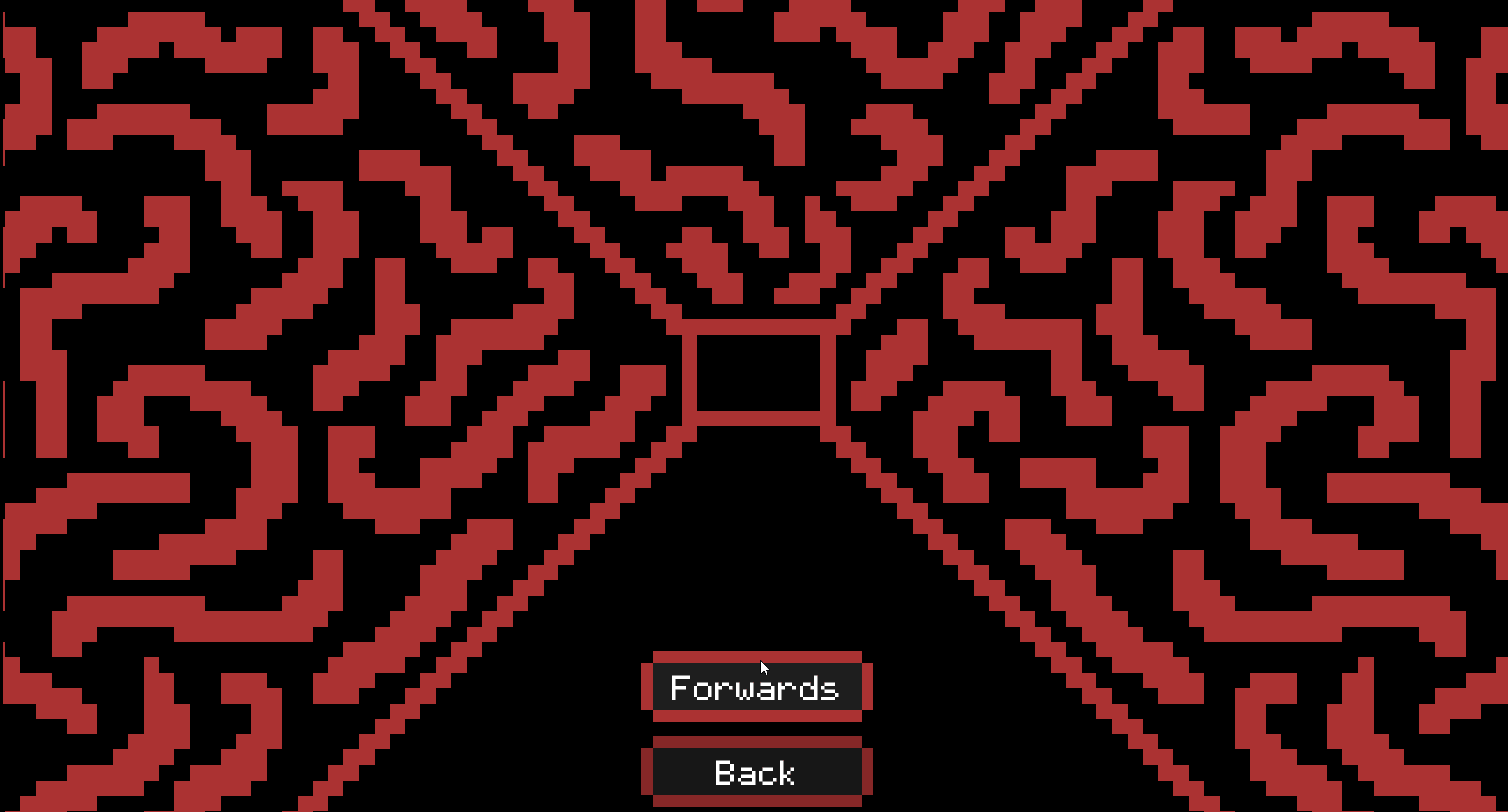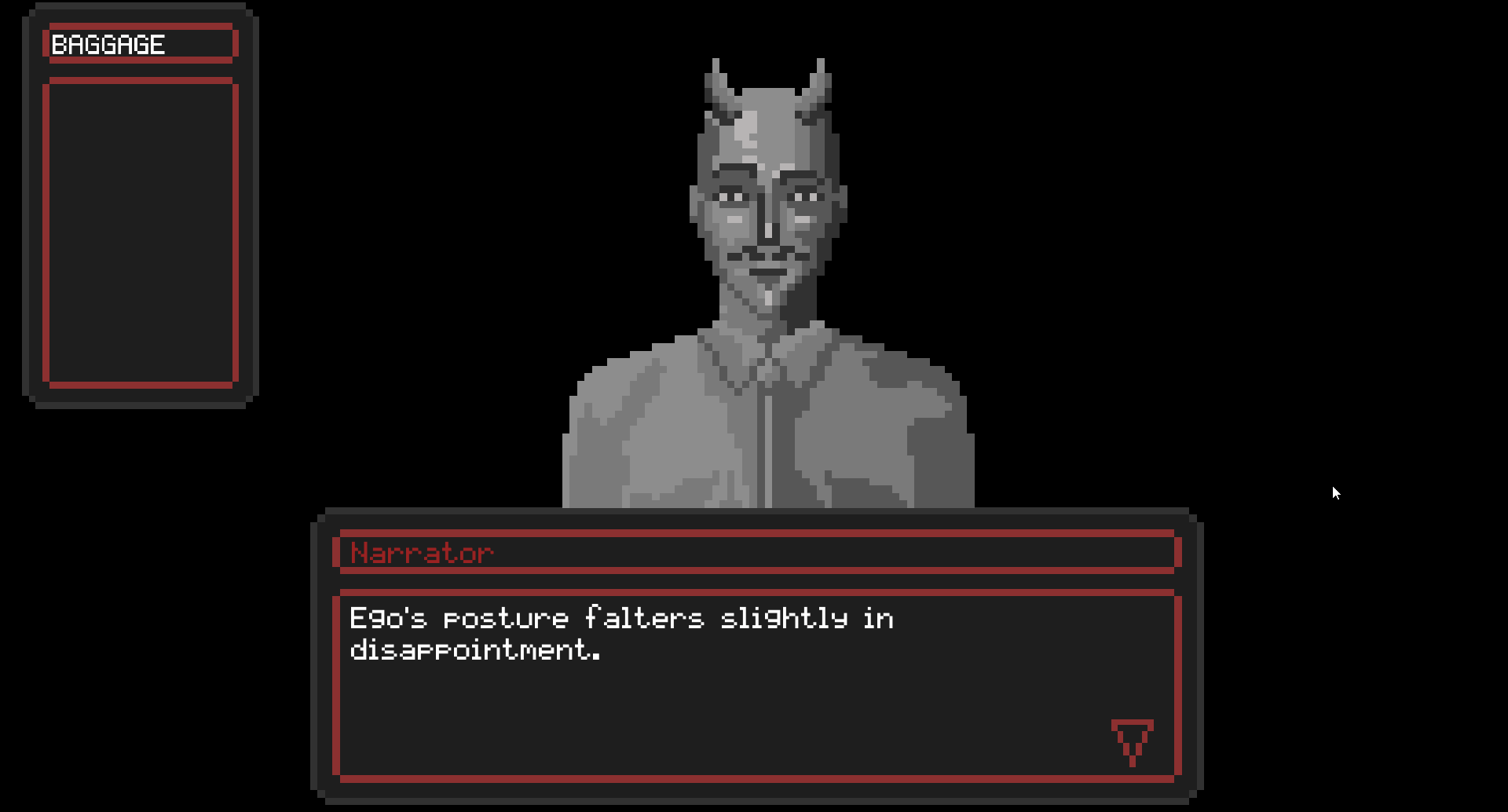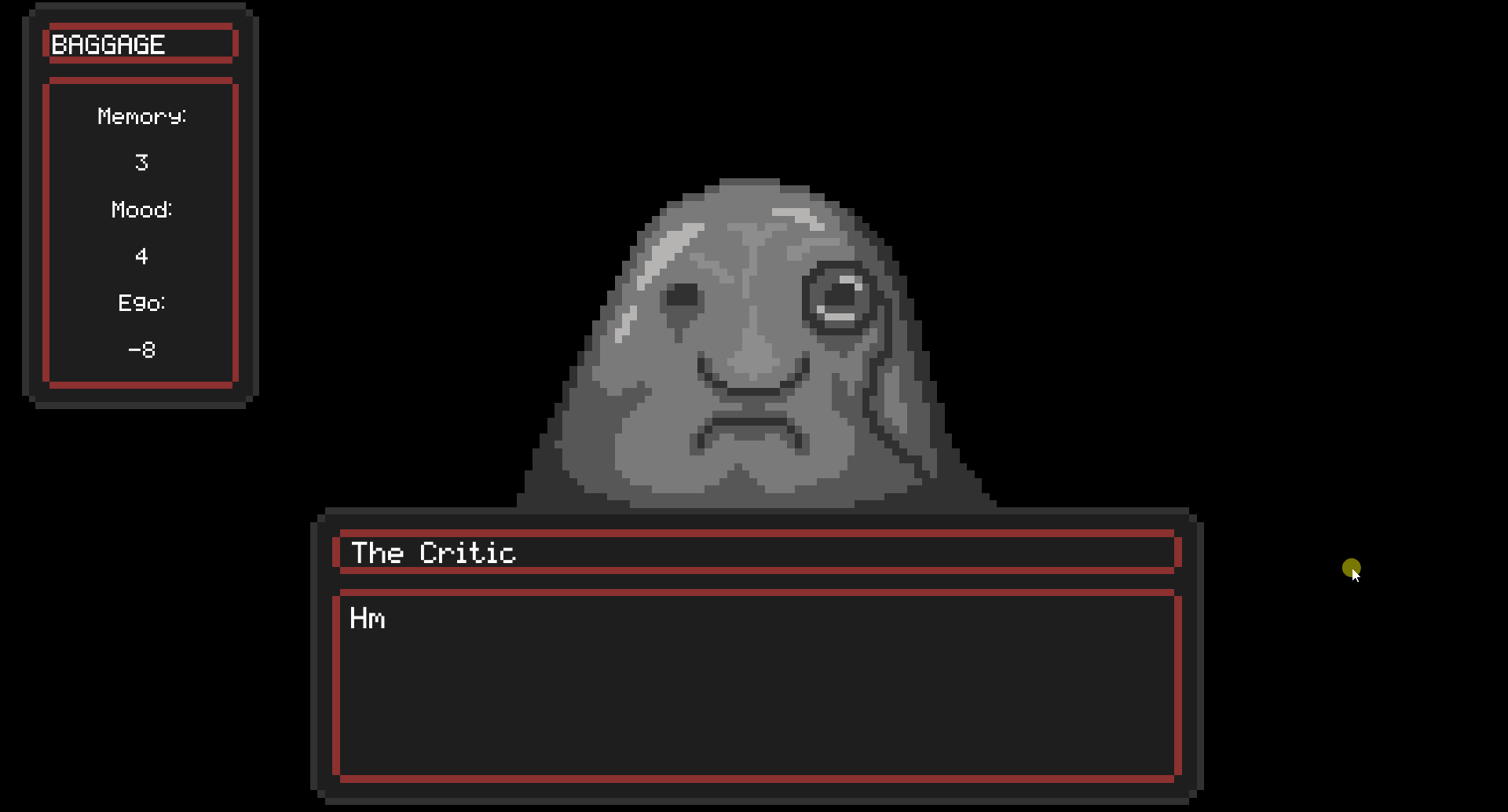SUMMARY OF CONTRIBUTIONS
Working as a solo developer for this project, I undertook all facets of development, through from ideation to implementation.
I designed stat systems and level spaces, wrote the entirety of the narrative (containing over 5000 words of branching dialogue), illustrated the pixel art, and created a minimal UI system, amongst other general development responsibilities.
LEVEL DESIGN AND NAVIGATION
In-between their interactions with the game's various characters, players are tasked with navigating through winding corridors to reach the next encounter. Level spaces were intended to create a purposely disorienting feeling, with the player unsure if they are going the right way. As a result, the level topology took on a snaking, labyrinthine appearance (see images below). Unbeknownst to the player, I was sure to always include multiple exits to each level space to prevent frustration, and create the feeling of relief and refuge.


The aesthetic of the levels were intended to capture a feeling of 'retro abstraction' - creating a feeling of ambiguity and intrigue through a limited palette and pixel count. I was also largely inspired by dungeon crawling games of the '90s, which used a similar method of 2D sprites mimicking 3D environments to create the illusion that you are traversing a 3D space.

NARRATIVE DESIGN
Being a choice-based story-driven game, it was important to prepare much of the narrative's design before beginning development, figuring out how each strand will interconnect. I decided to go for a 'braided narrative topology', meaning that the narrative will branch out and converge at points to create an overall linear experience with beats in which players have agency and can affect the overarching story. Using a visual scripting plugin for Unity I was able to easily arrange these dialogue sections in my desired order using colour-coded flowcharts, as can be seen in the images below.


The braided topology can be seen, with the flowchart frequently branching out, before converging at particular moments. Colour-coding was employed to keep the system readable. Blue represents an entrance or exit to dialogue. Yellow is a standard dialogue piece, while orange represents dialogue in which the player will be prompted to respond. Red and green represent dialogue resulting in a stat decrease or increase respectively. Finally, any purple dialogue section is a variable stat increase or decrease, dependent on a previous response.
THE 'BAGGAGE' SYSTEM
In an attempt to add some systemic depth to the experience, I devised a stat system referred to in-game as 'baggage'. These took the form of various mental constructs, namely Ego, Mood, and Memory. Depending on how the player decides to respond to each character they encounter, these stats can increase or decrease, unlocking certain responses that the player can make later in the game. This gives players the feeling that the choices they are making are having an impact on the game, allowing them to roleplay to an extent. It also adds a small amount of replayability as it is not possible to see everything in one playthrough.


Players also have the opportunity to meet Soul Slugs while navigating the dungeon. These otherworldly beings can be eaten in order to increase or decrease a desired stat by two points. Their inclusion is intended to allow players to have more direct agency over their stats, and add some surprise to the navigational sections.

'THE CRITIC' - CHOICE AND CONSEQUENCE
This game features many branching dialogue choices, with a large amount of those affecting your baggage stats. While these stats have gameplay consequences throughout your journey, I wanted to add a more concrete feeling of choice and consequence. This led me to create the final interaction with the Critic; a finale that truly analyses the player's previous choices and makes them reflect on their personal experience with the game.

Up until this point, the player has been indirectly referenced by characters, but the arrival of the Critic completely breaks the fourth wall as their choices come into question. Using previously stored integer variables, the Critic will make different remarks about each of your baggage stats, dependant on whether they are positive, negative or neutral. He will even recount the Soul Slugs that you may or may not have chosen to consume on your journey. At the end of the interaction, the player's response is then tailored to these remarks, allowing them to rebuff the Critic, stand up for themselves, and advance on an uplifting note.



